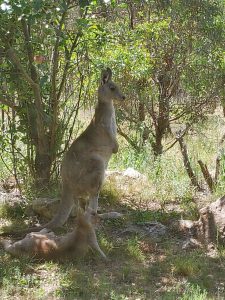Today I’m short of time. Always, when I’m short of time I make excuses or take shortcuts. Today, I looked in my e-library (I have a marvellously huge e-library) and wondered if I could find something there that would explain itself. Since I love the work of one Hannah Woolley, who wrote recipe books and other handy guides to everyday life in the seventeenth century, I wondered if I could find something by her and give you extracts, to show you that her work is worth chasing… without arguing or explaining. The book is The Gentlewoman’s Companion: or, A Guide to the Female Sex, from 1675. Her Epistle dedicatory explains all:
“I have formerly sent forth amongst you two little books; the first called, The Ladies Directory the other, The Cooks Guide both which have found very good acceptance. It is near seven years since I began to write this book, at the desire of the Bookseller, and earnest intreaties of very many worth friends; unto whom I owe more than I can do for them. And when I considered the great need of such a book as might be a Universal Companion and Guide to the Female Sex, in all relations, Companies, Conditions, and states of Life even from Childhood down to Old age; and from the Lady at the Court, to the Cook-maid in the Country: I was at length prevailed upon to do it, and the rather because I knew not of any Book in any Language that hath done the like. Indeed many excellent Authors there be who have wrote excellent well of some particular Subjects herein treated of. But as there is not one of them hath written upon all of them; so there are some things treated of in this Book, that I have not met with in any Language, but are the Product of my Thirty years Observations and Experience.
I will not deny but I have made some use of that Excellent Book, The Queens Closet; May’s Cookery; The Ladies Companion; my own Directory and Guide; Also, the second part of Youth’s Behaviour, and what other Books I thought pertinent and proper to make up a Compleat Book, that might have an Universal Usefulness; and to that end I did not only make use of them, but also of all others, especially those that have been lately writ in the French and Italian Languages. For as the things treated of are many and various, so were my Helps.”
My favourite paragraph is one where Mrs Woolley explains herself so carefully that I wonder just how many times in her life she was mansplained.
“I know I may be censured by many for undertaking this great Design, in presenting to all of our Sex a compleat Directory, and that which contains several Sciences: deeming it a Work for a Solomon, who could give an account from the Cedar to the Hysop. I have therefore in my Apology to the Bookseller, declared ho I came to be of Ability to do it, reciting to him the grounds of my knowledg in all those Sciences I profess and also what practice and experience I have had in the World, left any should think I speak more than I am able to perform. I doubt not but judicious persons will esteem this Essay of mine, when they have read the Book, and weighed it well; and if so, I shall the less trouble my self what the ignorant do or say.
I have now done my Task, & shall leave it to your candid Judgments and Improvement; your Acceptation will much encourage Your Most humble Servant, Hannah Woolly.”
And my job here is done. She has convinced you herself that her writing should be read… or not. To be honest, I like her cookbook and use it a lot. This particular book is more educational and full of moral instruction. It’s like eating a meal with a great deal of fibre. It may be tremendously good for one’s digestion but it’s not nearly as much fun as eating unhealthily. Except that she encourages reading, “one would think to make the preposterous suspitions of some to vanish, who vainly imagine that Books are Womens Academies, wherein they learn to do evil with greater subtilry and cunning; whereas the helps of Learning, which are attained from thence, not only fortifies the best inclinations, but enlargeth a mean capacity to a great perfection.” While her preference is for educative and religious tomes, I hold hope that if she travelled in time, Mrs Woolley might read some of the same books I enjoy.
“Some may imagine, that to read Romances after such practical Books of Divinity, will not only be a vain thing, but will absolutely overthrow that fabrick I endeavoured to erect: I am of a contrary opinion, and do believe such Romaces which treat of Generosity, Gallantry, and Virtue, as Cassandra, Clelia, Grand Cyrus, Cleopatra, Parthenissa, not omitting Sir Philip Sydney’s Arcadia, are Books altogether worthy of their Observation. There are few Ladies mention’d therein, but are character’s what they ought to be the magnanimity, virtue, gallantry, patience, constancy, and curage of the men, might intitle them worthy Husbands to the most deserving of the female sex.”
Her writing style is infectious. That’s the real reason I am full of quotes. It’s either be full of quotes or start to write short fiction as if I were a seventeenth century gentlewoman. Quite simply, there is so much of the culture of England at that time in this book, that every paragraph evokes a reaction. And now I’m arguing you should read the book instead of leaving the argument to the author of the book… I shall end here.



